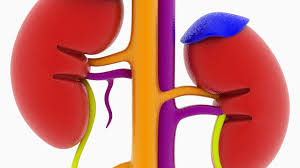Kidney transplantation or renal transplantation is the kidney transplant into a patient with end-stage renal disease [ESRD]. Kidney transplantation is typically classified as deceased-donor or living-donor transplantation depending on the source of the donor organ. Hence, there are two types of kidney transplants: those that come from living donors and those that come from non-living donors. A living donor may be your family member or your spouse or close friend. In some cases, it may be a stranger as well who wishes to donate a kidney to anyone in need of a transplant. There are advantages and disadvantages to both types of kidney transplants.
The three treatment choices are preferred when kidney fails:
Hemodialysis,
Peritoneal dialysis,
Kidney transplantation.
The rejection of the Kidney is the main problem that is faced after transplantation. The body’s immune system fights and protects against foreign organisms such as bacteria attack. This defense system may recognize tissue transplanted from someone else as “foreign” and attack this “foreign invader.”
The victim needs to take immunosuppressant medicine every day to prevent rejection of the new kidney. Anti-rejection medications have a large number of possible side effects because the body’s immune defenses are suppressed.
A kidney transplant is an operation that places a healthy kidney in the body. The transplanted kidney prevents dialysis, as it takes over the work of the two kidneys that failed.
During a transplant, the surgeon places the new kidney in the lower abdomen and connects the artery and vein of the new kidney to the patient’s artery and vein. Often, the new kidney will start making urine as soon as patient’s blood starts flowing through it. But sometimes it takes a few weeks to start working.
Many transplanted kidneys come from donors who have died. Some come from a living family member. The wait for a new kidney can be long.
If you have a transplant, you must take drugs for the rest of your life, to keep your body from rejecting the new kidney.

